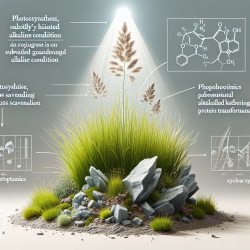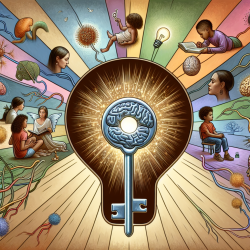Introduction
The field of cognitive dysfunction research is rapidly evolving, and recent findings have highlighted the significance of the blood-brain barrier (BBB) as an early biomarker of cognitive impairment. The study titled "Blood-brain barrier breakdown is an early biomarker of human cognitive dysfunction" provides insights that can be pivotal for practitioners aiming to enhance their skills and understanding of cognitive dysfunction.
Understanding the Blood-Brain Barrier
The blood-brain barrier is a critical component in maintaining the brain's microenvironment. It acts as a selective barrier, regulating the passage of substances between the bloodstream and the brain. Recent research suggests that the breakdown of this barrier can serve as an early indicator of cognitive dysfunction, independent of traditional Alzheimer's disease biomarkers such as amyloid-beta (Aβ) and tau proteins.
Key Findings from the Research
The study conducted by Nation et al. (2019) demonstrated that individuals with early cognitive dysfunction exhibit brain capillary damage and BBB breakdown in the hippocampus, regardless of changes in Aβ and tau biomarkers. This suggests that BBB breakdown could be an independent early biomarker of cognitive dysfunction.
- Increased cerebrospinal fluid (CSF) levels of soluble platelet-derived growth factor receptor-β (sPDGFRβ) were observed in individuals with cognitive impairment, indicating damage to brain capillary pericytes.
- Dynamic contrast-enhanced magnetic resonance imaging (DCE-MRI) revealed increased BBB permeability in the hippocampus and parahippocampal gyrus, further supporting the role of BBB breakdown in cognitive dysfunction.
- The study found that these changes were not influenced by vascular risk factors, highlighting the independence of BBB breakdown from traditional cognitive impairment pathways.
Implications for Practitioners
For practitioners in the field of cognitive dysfunction, these findings offer new avenues for early diagnosis and intervention. By focusing on BBB integrity, practitioners can potentially identify cognitive dysfunction at an earlier stage, allowing for more timely and targeted interventions.
Furthermore, this research underscores the importance of considering neurovascular dysfunction as a contributing factor to cognitive decline, independent of classical Alzheimer's disease biomarkers. This holistic approach can enhance the effectiveness of therapeutic strategies and improve patient outcomes.
Encouraging Further Research
While the study provides valuable insights, it also opens up new questions and areas for further research. Practitioners are encouraged to explore the mechanisms underlying BBB breakdown and its relationship with cognitive dysfunction. Additionally, investigating potential therapeutic interventions aimed at preserving BBB integrity could offer promising strategies for mitigating cognitive decline.
Conclusion
The research on BBB breakdown as an early biomarker of cognitive dysfunction presents a paradigm shift in our understanding of cognitive impairment. By integrating these findings into practice, educators and therapists can enhance their approach to diagnosing and managing cognitive dysfunction, ultimately improving the quality of life for individuals affected by these conditions.
To read the original research paper, please follow this link: Blood-brain barrier breakdown is an early biomarker of human cognitive dysfunction.










